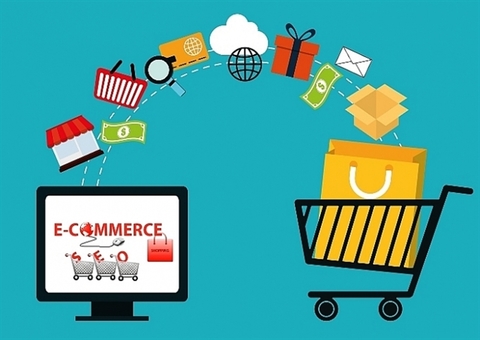In 2018, JD.com announced the investment of $44million in Vietnam’s leading B2C platform TIKI.VNby VNG, the biggest investment in an affiliate.
 |
In March 2018, Alibaba bought Lazada and raised its total investment capital there to $4 billion.
SEA, the holding company of Shopee, keeps injecting money into the marketplace despite losses.
According to the Vietnam E-commerce Association (VECOM), Vietnam’s e-commerce grew by 25 percent in 2017. If the growth rate is maintained, the market value may reach $13billion by 2020.
The ‘e-commerce fever’ has created a crowded and competitive logistics market with more than 50 suppliers by 2017, from traditional forwarding service providers such as Viettel Post, EMS and VNPost to startups such as giaohangnhanh, supership and giaohangtietkiem, from domestic to international companies such as DHL, Grab Express and Lazada Express.
|
According to the Vietnam E-commerce Association (VECOM), Vietnam’s e-commerce grew by 25 percent in 2017. If the growth rate is maintained, the market value may reach $13billion by 2020. |
However, though Vietnam is an attractive market, it still doesn’t bring profits.
There are four factors that determine success and failure.
For marketplaces, technology is considered a prerequisite condition to bring good shopping experiences to customers and help sellers optimize profits. In addition to systematic thinking, a great amount of capital to maintain technology applications is vital.
Marketplaces also need to apply good policies for sellers and buyers to lure them to the trading floors. That is why e-commerce firms recently have poured money into costly marketing campaigns and subsidy programs.
This is the favored method that Vietnamese firms use to conquer consumers’ hearts and expand their market share.
The third factor is logistics costs. Logistics activities of marketplace include the transportation of goods from sellers’ warehouse to buyers, or from the marketplace’s storehouses to buyers’ doors.
Some experts estimate that the transportation cost makes up 25 percent of total cost for one order. At present, most e-commerce firms offer partial or 100 percent subsidy for the coast, i.e. buyers don’t have to pay shipping costs. The subsidy gobbles up the firms’ profits and make their losses more serious.
Delivery time and refusal rates are also a big headache for marketplaces. In many cases, e-commerce firms have to build up transport staff of their own instead of outsourcing to others.
Meanwhile, the investment rate for the development of delivery networks is huge. And because of the expenses, the lossed incurred by e-commerce firms is foreseeable.
Linh Nga

E-Commerce needs a new push to reach rural areas
E-commerce is developing rapidly in Viet Nam but it needs a new push to reach rural areas and help small- and medium-sized enterprises (SMEs) reach customers, experts have said.

Concerns persist over taxation of foreign e-commerce firms
The passing of the amended Law on Tax Management by the National Assembly is expected to improve the taxation on e-commerce activities.
 They are spending big money on technology to manage business effectively and give clients the best experiences, and on marketing campaigns to lure more customers.
They are spending big money on technology to manage business effectively and give clients the best experiences, and on marketing campaigns to lure more customers.